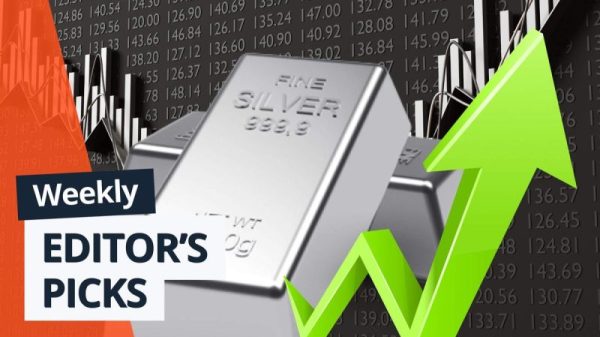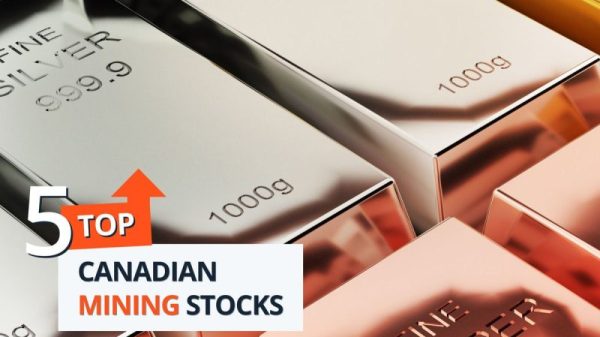Of all the metals on Earth, gold shines the brightest when it comes to building and preserving wealth. In fact, the gold price is up about 500 percent compared to 20 years ago.
Despite that impressive increase, many investors are still wondering, “When will gold go up?”
The precious metal is a safe-haven asset that performs well in tumultuous times, and there have been plenty of global crisis events in the past few years — most recently the politico-economic repercussions stemming from Russia’s war in Ukraine, the socioeconomic fallout from the COVID-19 pandemic and rising interest rates as central banks battle entrenched inflation.
There are plenty of gold bulls calling for the price of the yellow metal to take off soon. Nevertheless, answering the question, “When will gold go up?” is a bit of a guessing game, even for veteran gold market analysts.
That said, there are certain time-tested indicators for when gold will go up that market participants can track in order to make a more educated guess about the precious metal’s future price action.
What factors make the gold price go up?
If you want to know when gold will go up, the yellow metal’s past performance is a good place to start. Let’s start with a look at its price action during the breakout of the Russia-Ukraine war.
The gold price started 2022 at around US$1,800 per ounce, and just before Russia invaded Ukraine on February 24 of that year, gold was trading at US$1,864. Over the following two weeks, as fears of the inevitable global economic fallout reached a crescendo — in concert with rising global inflation, which can increase the allure of safe-haven assets — the yellow metal broke through the US$2,000 level to hit an all-time record high of US$2,074.60 on March 8.
However, gold’s time above US$2,000 was short-lived. Inflationary pressures led central banks around the world, including the US Federal Reserve, to raise interest rates in an effort to cool demand. Rate hikes are generally negative for gold because when rates are higher, investment products that accrue interest are more profitable.
Ultimately, gold ended the first half of last year around the same price at which it began, supported by multi-decade highs in inflation and ongoing geopolitical uncertainty. In fact, the yellow metal was one of the best-performing asset classes in the first half of 2022, even in comparison to stocks and inflation-linked bonds.
Gold’s ability to withstand political and economic turmoil has been on full display the past few years. “Because you can see in 2019, gold was US$1,300 an ounce, then it got to over US$2,000 in August of 2020. And it got to over US$2,000 again in March of 2022,” said Jeffrey Christian, managing partner at CPM Group, in mid-2022.
During the first half of 2023, further rate hikes by the Fed bolstered recession concerns and sparked discussions about whether the central bank would need to reverse course. Against that backdrop, gold once again soared above the US$2,000 mark and in sight of its all-time high before pulling back to the US$1,900 level in June.
Heading into the second half of 2023, there are signs that the Fed may be coming to the end of its hiking cycle. Its July rate increase, the 11th since March of the previous year, was met with more confidence that this latest boost will be the last. This optimism is viewed as highly supportive for the price of gold; nonetheless, the yellow metal has tracked lower, even sliding down to the US$1,880 range in mid-August.
How do supply and demand affect the gold price?
As mentioned, when it comes to the outlook for gold, investors should continue to watch destabilizing geopolitical events, including the ongoing economic impact of the Russia-Ukraine war, future Fed rate changes and ongoing trade tensions between China and other G7 countries, including the US, Canada and Australia.
But what about gold supply or gold demand? The WGC’s 2022 report on the market indicates that last year total gold supply increased by 2 percent compared to 2021. The WGC attributes the growth to improved gold mine production and marginal increase in gold recycling. Gold mine production recovered by 1 percent to a four-year high of 3,612 metric tons.
Looking at the numbers for the first half of 2023 in the WGC’s most recent trends reports, gold bar and gold coin investment witnessed continued growth in both the first and second quarters, gaining 5 percent in Q1 and 6 percent in Q2 year-on-year. This demand came during a high inflationary environment and increasing geopolitical risk. The regions with the highest demand for this gold investment category were Turkey and the Middle East.
Demand for gold jewelry was flat in the first quarter of 2023. However, it showed some renewed strength in Q2, when it was up 3 percent year-on-year. Traditionally, gold jewelry is responsible for 50 percent of global gold demand. While China and India are the two largest markets for gold jewelry, the purchasing power of their citizens has been hurt by the pandemic.
Meanwhile, gold exchange-traded funds experienced 50 metric tons of net outflows in H1 2023, compared with 223 metric tons of inflows in H1 2022. On the industrial side, gold is used in electronics and is benefiting from the rise of nanotechnology. However, this demand segment has also been impacted by weaker demand for consumer electronics, with demand for gold from that segment declining by 12 percent year-on-year in Q2 2023.
Over the past decade, central banks have become net buyers of physical gold, and central bank gold buying reached a record first half in 2023, coming in at 387 metric tons. “Despite the Q2 slowdown, the strong Q1 start set the seal on a record-breaking H1. Buying activity remains widespread and distributed among both emerging and developed countries,” states the WGC. Its annual central bank survey shows that nearly one-quarter of respondents plan to increase their gold reserves in the next year, on par with the number that planned to do so in 2022.
Will the gold price go up in the future?
Gold broke through the US$2,000 level to reach record highs in both 2021 and 2022, leading investors to dream of another breakout for the precious metal in 2023. Will the gold price post a new record-breaking high soon?
CPM Group’s Christian said his firm sees the potential for gold to take another run at its record high next year, and he pointed to many ‘substantive real reasons’ for investors to get excited about gold and where it’s going. ‘Not because gold’s going to US$10,000 — it’s because gold is going to average more than US$1,900 this year on a record annual basis, and it may well in our projections average more than US$2,000 next year, which will be a further big increase to another record high,’ he said.
‘I think part of what’s propping up the gold price right now is central bank purchases, not the individual investor purchases,’ he said. ‘And I don’t think they’re going to get going until the Fed’s done — but I think they’re pretty close. As soon as they pause and then starts receding, I think investors will get in the game,” said Rich Checkan of Asset Strategies International.
Securities Disclosure: I, Melissa Pistilli, hold no direct investment interest in any company mentioned in this article.




























